![]()
Mon, April 11, 2011 | The Meir Amit Intelligence and Terrorism Information Center

The logo of the Syrian Muslim Brotherhood: the Quran and two swords (the Muslim Brotherhood logo) beneath a map of Syria and text that reads: “Say good things to people” (a Quran verse that implies the need to guide the believers on the path of righteousness in the spirit of da’wah -- preaching Islam -- emphasized in Hassan al-Banna’s thought and work).
Hamas’ Difficult Position on the Syrian Revolt
Hamas has found itself in a predicament over the clash between its solidarity with Muslim Brotherhood elements in Syria interested in toppling the regime, as well as with Sheikh al-Qaradawi’s attack on Bashar al-Assad, and its dependence on the assistance provided by the Assad regime to its infrastructure and terrorist activity.
Overview
The Syrian Muslim Brotherhood was established in the 1940s by the students of Hassan al-Banna, the founder of the movement. While elsewhere in the Arab world the movement focused on building a social infrastructure and exhibited a great deal of pragmatism and readiness to show restraint in the face of suppression by the regimes, the Syrian movement embarked on a path of violent confrontation with the regime.
In the 1970s and early 1980s, the movement used violence against Hafez al-Assad’s regime. In response, the regime struck a devastating blow against the movement which included a massacre in the city of Hama, outlawing it and making Muslim Brotherhood-related activities punishable by death. The Syrian movement is still trying to recover from Hafez al-Assad’s suppression (according to unofficial estimates, 10,000-20,000 people were killed in Hama by Assad’s forces, and the city was severely damaged).
It is our assessment that the Muslim Brotherhood in Syria holds great sway over the Sunni majority, hostile towards Bashar al-Assad’s Alawite minority regime. However, lessons learned in the past, the legal ban, and concerns over rampant suppression by the army and the Syrian security apparatuses have driven the Muslim Brotherhood to keep a low profile in the latest protests, similarly to the movement’s activists in Egypt and other countries.
The Muslim Brotherhood leadership, headed by General Supervisor Riyad al-Shaqfa, is working from the outside and attempts to fan the protests in Syria using the media, particularly Al-Jazeera. Of particular note was a press conference in Istanbul held by Al-Shaqfa in Istanbul, in which he strongly condemned the regimes of Bashar al-Assad and his father Hafez, calling for a revolution/intifada against the “oppressive regime”. Apparently, the permit to hold the press conference was cause for some tension between Turkey and Syria, two countries currently in a process of rapprochement. This was reflected in an announcement made by the Turkish Foreign Ministry spokesman (which apparently did not satisfy the Syrian regime, as the spokesman attempted to play both sides of the fence by expressing support for the Syrian people’s desire for reform while also supporting Syria’s stability).
The Muslim Brotherhood’s foreign media campaign was joined by Sheikh Yusuf al-Qaradawi, perceived as the supreme religious and ideological authority of the Muslim Brotherhood (even though he is not the official leader of the movement). During a Friday prayer aired on Al-Jazeera on March 25, he called for a revolution in Syria, strongly criticized Bashar al-Assad and the Syrian regime, and expressed unconditional support for the revolutionists in Syria.
These remarks placed the Damascene Hamas leadership in a dilemma, catching it between a rock and a hard place — between its ideological identity and its interests as a movement:
a. On one hand, the Hamas leadership, headed by Khaled Mash’al, operates from Damascus, with the approval and supervision of the Syrian regime. It is from there that it coordinates Hamas’ activity in the Gaza Strip and elsewhere, and receives military aid from Syria and Iran, its ally.
b. On the other hand, Sheikh Al-Qaradawi is a primary religious authority for Hamas and its supporters, and the Muslim Brotherhood — persecuted and suppressed by the Syrian regime — is Hamas’ mother movement. Furthermore, thinking ahead Hamas needs to take into account that complete identification with the Assad regime may compromise it if and when it is toppled.
This dilemma could be witnessed in contradictory and ambiguous remarks made by Hamas and its senior figures. Exceptionally, Political Bureau chief Khaled Mash’al strongly condemned Al-Qaradawi’s announcement and protected the Syrian regime. On the other hand, senior Hamas official Osama Hamdan claimed that it was a false, fabricated report spread by Israel (Khaled Mash’al’s announcement was also denied on the Hamas website). Furthermore, the Hamas leadership in Damascus, attempting to play both sides of the fence, released an announcement saying it supported both the Syrian leadership and the Syrian people. This conduct by Hamas and the strong rivalry between the Muslim Brotherhood and the Syrian regime harbor a potential for tensions between them, in our assessment.
The conduct of Turkey and Hamas exposes hidden tensions between Syria’s secular regime, which suppresses the oppositionist Muslim Brotherhood, and Syria’s Islamic allies, which sympathize and are affiliated with the Muslim Brotherhood. It is our assessment that such tensions may increase as protests expand and as President Assad’s regime has difficulties facing the sectarian and religious tensions stemming from the rule of an Alawite minority (considered infidel) over a Sunni Muslim majority.
The development of the Syrian Muslim Brotherhood[1]
The Syrian Muslim Brotherhood was established by Hassan al-Banna’s students in Syria in 1945. In its formative period, it was mostly involved in educational and social activity (da’wah). At least until the early 1980s, the focal points of its activity were Homs and Hama, the large Sunni cities in central Syria. The movement also maintained presence in the poorer neighborhoods of Damascus. In the 1960s and 1970s, the Syrian movement underwent a process of ideological radicalization in the spirit of Sayyid Qutb’s ideology. As a result, since 1972 the militant faction has been the dominant one, calling for jihad against the Syrian regime.
A prominent figure among the founders was Mustafa al-Siba’i, a lecturer on Islamic religious law from Damascus University, who was the movement’s first general supervisor in Damascus.[2] His student was Sa’id Hawa, one of the Syrian movement’s most influential figures in the 1970s and 1980s. The Syrian authorities arrested him for five years for calling to topple Hafez al-Assad’s regime and establish a Sunni Islamic state in Syria. During his prison term, he wrote books and formulated his teachings. In 1979 Sa’id Hawa became the movement’s leader, a post he held until 1987.[3]
In the 1970s and early 1980s, the Muslim Brotherhood employed violence and terrorism in its fight against the Hafez Assad regime. The movement activists’ struggle included murdering military officials and senior Baath party activists. Eventually, after several years of violent clashes between the Muslim Brotherhood and the Hafez Assad regime, the movement was dealt a crushing blow in Hama, 1982, where the Syrian army employed massive military force against civilians (including armored vehicle and artillery). According to unofficial estimates, some 10,000-20,000 civilians were killed in Hama and the city suffered extensive damage, including the destruction of numerous mosques.

Scenes of destruction in Hamas following the suppression of the uprising by the Syrian army (left: an Egyptian blog, egyptianchronicles.blogspot.com; right: Ikhwanwiki website, February 8, 2010)
The brutal suppression of the Muslim Brotherhood movement, along with a law from 1980 (valid to this day) which mandates the death penalty for membership in the Muslim Brotherhood or involvement in its activity, drove the movement underground and resulted in the nearly complete cessation of its activities in Syria. Today, Muslim Brotherhood leaders operate mostly outside of Syria, mainly in London and Aachen, Germany, and other European cities and various places in the Middle East. The movement’s base in Aachen was built by Issam al-Attar and funded by Youssef Nada (long considered the main sponsor of the Muslim Brotherhood worldwide).[4]
The Muslim Brotherhood under Bashar al-Assad
When Bashar al-Assad assumed power in 2000, the movement held contacts with the regime and hundreds of its activists were released from prison. The contacts soon ceased, however, and since 2004 the movement has been more active than ever to convince the Syrian people and Western countries that the Syrian regime must be toppled.
Following Operation Cast Lead (2009), the Syrian Muslim Brotherhood office in London announced the suspension of its activity against the Syrian regime so that the movement could direct all of its resources towards assisting Hamas in the Gaza Strip. The announcement concluded with a call to the Syrian regime to “make peace with the people” so that it could fulfill “its sacred duty in liberating the occupied land…” (Al-Quds, Kuwait, September 18, 2009). Meanwhile, new rumors began circulating about contacts between the movement and the regime to discuss the abolishment of the law banning the movement’s activity in Syria.
The general supervisor of the Syrian Muslim Brotherhood in 1996-2010 was Ali Sadr al-Din al-Bayanuni, originally from Aleppo, attorney by trade, operating from London since 2000. In London, he joined Abdul Halim Khaddam, Syria’s former vice president who went on exile in London in 2005, and became one of the major opposition figures against the Syrian regime. The two agreed to work together against Bashar Assad’s regime as part of Khaddam’s National Salvation Front. Later, the Muslim Brotherhood left the National Salvation Front and its cooperation with Khaddam came to an end. In August 2010, the engineer Muhammad Riyad al-Shaqfa was appointed the general supervisor (Al-Masri al-Yoom, August 13, 2010).
Profile of Muhammad Riyad al-Shaqfa
Muhammad Riyad al-Shaqfa was born in Hama, 1944, to a father who served as the leader of the local clerics’ association. He joined the Muslim Brotherhood in 1961. He studied in Damascus University in the 1960s and graduated in 1968 with a B.A. in civil engineering. In 1978 he became member of the Muslim Brotherhood local leadership in Hama, and its chairman one year later. In 1983 he became member of the Syrian movement’s leadership. He apparently has a military background.[5]
Since the early 1980s (probably following the Hama events) Al-Shaqfa resided in Iraq. In 2003, he survived an assassination attempt in Baghdad with only light injuries. He has been living in Yemen since 2008. He said that, although he lived in Yemen, he was constantly in touch with the Muslim Brotherhood through the internet.[6] In the past year, he expressed his willingness to turn the Syrian movement into a political party,[7] similarly to Muslim Brotherhood movements in other countries.

(Left) - Engineer Muhammad Riyad al-Shaqfa: the general supervisor of the Syrian Muslim Brotherhood as of 2010 (from the movement’s website); (Right) - Ali Sadr al-Din al-Bayanuni: the general supervisor of the Syrian Muslim Brotherhood in 1996-2010 (Al-Hiwar, the Muslim Brotherhood TV channel in London, November 16, 2009)
The Muslim Brotherhood’s involvement in the recent protests in Syria
Overview
In February 2011, following the dramatic events in Tunisia and Egypt, the Syrian Muslim Brotherhood re-launched their media campaign against the Syrian regime. They called on it to stop its suppression against the Syrian people and strongly criticized the poverty, hunger, and unemployment prevailing in Syria (Al-Sharq al-Awsat, February 2, 2010). It is our assessment that Muslim Brotherhood activists and supporters take part in the Syrian protests, while (similarly to Egypt) keeping a low organizational profile and playing down their belonging to the Muslim Brotherhood.
Riyad al-Shaqfa’s press conference in Istanbul
While the Muslim Brotherhood in Syria keeps a low profile due to its concerns over the reaction of the Syrian security forces, there have been two noteworthy expressions of support for the insurgents from two of the movement’s senior figures outside of Syria: Riyad al-Shaqfa and Sheikh Yusuf al-Qaradawi.
On April 1, Riyad al-Shaqfa, the general supervisor of the Syrian Muslim Brotherhood, held a press conference in Istanbul. At the press conference, broadcast on Al-Jazeera Live, he harshly criticized the regime of Bashar al-Assad and his father, saying that since the moment Hafez al-Assad assumed power, the Syrian regime repressed the freedom of expression and turned Syria into a “kingdom of silence”. According to Al-Shaqfa, those who oppose the regime are sent to prison and there are over 20,000 people held in the Syrian regime’s prisons for over 30 years. Al-Shaqfa mentioned that Bashar al-Assad had promised to implement reforms, but was in fact “behaving just like his father”.
He added that the recent revolutions in several Arab countries raised the Syrian people’s morale and prompted it to stage a revolution against the “oppressive regime”, which started in Daraa. However, the regime brutally suppressed the demonstrations in Daraa and Latakia, where “the regime’s mobsters” slaughtered civilians. Al-Shaqfa concluded by denying Bashar’s claims that foreign elements were pushing the Syrian people to a revolution, accused the president of being an obstacle to reforms, and announced that an intifada was expected to take place in Syria on April 1 (the day of the press conference).[8]
It appears that the permit given to Al-Shaqfa to hold a press conference in Istanbul stirred tensions between Turkey and Syria, two countries in a process of rapprochement. This was reflected in an ambiguous announcement issued by the spokesperson for the Turkish Foreign Ministry. The announcement stated that Turkey would not tolerate any initiative that would harm the will for reforms in Syria and that would hurt the stability of that country. He added that Turkey was “confident that the people of Syria would convey their demands and expectations through peaceful ways and that the Syrian administration would begin the promised reform process as soon as possible” (World Bulletin, an English-language Turkish news website, April 3, 2011).
An ambivalent approach towards Bashar Assad can also be found in an article by Taha Akyol in the Turkish newspaper Milliyet, titled “Syria, where to?” (April 4). In the article, the author expresses sympathy with Bashar Assad who, according to him, has greatly moderated his father’s Baathist dictatorship and promoted friendly relations and cooperation between Syria and Turkey. At the same time, the author calls on Assad to promote democratization and reform process and depart from the policy of his father. The author concludes by saying that the stability of the Syrian regime and its democratization are vital and necessary for Turkey.
Sheikh Yusuf al-Qaradawi’s support for the uprising in Syria
The external media campaign was joined by Sheikh Yusuf al-Qaradawi, residing in Qatar and considered the highest religious and ideological authority of the Muslim Brotherhood (even though he is not the official leader of the movement). Al-Qaradawi enjoys considerable influence among Sunni Muslims worldwide, including Hamas. It may be assumed that Al-Qaradawi also has influence among the Sunni Muslim population in Syria. Al-Qaradawi was joined by Jordan’s Muslim Brotherhood, which called on the Syrian regime to promote democracy and national reconciliation, and abolish the emergency laws (Jordanian Muslim Brotherhood website, April 4).
Al-Qaradawi, who expressed support for the uprisings in Tunisia, Egypt, and Libya (he specifically called on Libya’s tribesmen to rebel against Gaddafi), expressed support for a revolution in Syria during his March 25 Friday sermon. The following is a summary of the sermon, as broadcast on Al-Jazeera Live (March 25, 2011) and on CNN Arabic (April 1):
a. “The revolution train”, which has passed Tunisia, Egypt, Libya, and Yemen, has arrived at the station to which it was bound to arrive — Syria. Al-Qaradawi noted that Syria was even more deserving of a revolution than the other countries, since it is part of the Muslim nation, the laws of Allah apply to it, and it is historically linked (since the time of the Crusaders) to processes taking place in Egypt.
b. According to Al-Qaradawi, the people of Syria have risen up in Daraa, Damascus, Homs, and other cities. Thirty-seven martyrs were murdered in Daraa, and some even put the figure as high as 100 martyrs. Al-Qaradawi condemned the Syrian security forces for ignoring the sanctity of the mosques and having murdered the demonstrators at the Al-Omari mosque in Daraa. He further added that the fact of their murder shows that the Syrian revolution has already been won.
c. Al-Qaradawi criticized the Syrian constitution and argued that “the story of the Baath [party] ended with Saddam Hussein. The age of totalitarian party has come to an end.” He noted that there is a law in Syria stipulating that any member of the Muslim Brotherhood should be sentenced to death on the mere grounds of belonging to the movement, regardless of his actions. Such a law, according to Al-Qaradawi, exists nowhere else in the world.
d. Al-Qaradawi asserted that Muslim countries are behind other world countries because of oppression and persecution. He called on the Syrian regime to change, issuing an implied threat that “those who do not change will be trampled”. He also called to liberate the prisoners held in Syria’s jails, determine the whereabouts of over 15,000 missing people, and allow tens of thousands of Syrians who had fled the country to return.
Hamas between a rock and a hard place
Sheikh al-Qaradawi’s severe attack on the Syrian regime put the Damascus-based Hamas leadership in a dilemma. It has found itself conflicted between its ideological identity and its interests as a movement:
a. On one hand, the Hamas leadership, headed by Khaled Mash’al, operates from Damascus, with the approval and supervision of the Syrian regime. It is from there that it coordinates Hamas’ activity in the Gaza Strip and elsewhere, and receives military aid from Syria and Iran, its ally. Hence, interests require it to maintain good relations with the Syrian regime.
b. On the other hand, Sheikh Al-Qaradawi is a primary religious authority for Hamas and its supporters, and the Muslim Brotherhood — persecuted and suppressed by the Syrian regime — is Hamas’ mother movement. Furthermore, thinking ahead Hamas needs to take into account that complete identification with the Assad regime may compromise it if and when it is toppled.
This dilemma could be witnessed in contradictory and ambiguous remarks made by Hamas and its leaders. The most significant announcement, stressing Hamas’ support for the Syrian regime and (unusually) attacking Al-Qaradawi’s remarks, was published by Khaled Mash’al, the chief of Hamas’ Political Bureau. The following are the main points made by Khaled Mash’al (Day Press and Alsiasi websites, April 1, 2011):
a. Khaled Mash’al began by calling on Al-Qaradawi to “follow his conscience” and free himself from the pressure of “elements he considers to be qualified” (a hint at the rulers of Qatar).
b. Khaled Mash’al reminded Al-Qaradawi that, when the Sunni leaders of the Arab world had “sold” the Palestinian issue and the most visible Sunni sheikhs had “forsaken” the Palestinian people, Hamas, “the Muslim Brotherhood movement in Palestine”, found no other but Bashar al-Assad to protect and support it.
c. Khaled Mash’al strongly criticized Al-Qaradawi, noting that he was criticizing the actions rather than the person. He said that Al-Qaradawi’s remarks about the lack of religious unity in Syria were offensive to every Palestinian, and only served Israel’s interests. He wondered whether Al-Qaradawi had referred to fighting between Sunnis and “Alawite Muslims”, stating that “this is not the Sheikh Al-Qaradawi we knew, the one who calls for unity, a jihad warrior in what he says against Israel and the U.S.”
d. Khaled Mash’al concluded by arguing once again that Hamas can testify that “there is no Muslim who has given Palestine what Bashar al-Assad has given it”, and there is no Sunni Muslim who risked his power and country for Palestine by refusing to restrict the activity of the “Palestinian resistance” (i.e., terrorist organizations). He called on Al-Qaradawi to listen to the Syrian people and Syrian clerics to know that, in Syria, Sunni Muslims enjoy the kind of dignity and liberty they do not have in other countries, where Sunni rulers yield to the Americans and avoid supporting Palestine (referring to pro-Western Arab countries).
However, on April 2, one day after the release of Khaled Mash’al’s statement, Hamas spokesman Osama Hamdan claimed that it was a false report distributed by Israel. In an interview to Al-Sabil (the Muslim Brotherhood organ in Jordan), he said that the report was “false and fabricated” and that Hamas hoped it would not be quoted. He added that Israel, realizing Al-Qaradawi’s status with Hamas and the Palestinian people, was trying to create a rift between Al-Qaradawi and Hamas by spreading false information. Another denial appeared on the Hamas website (Palestine-info).
Another announcement reflecting Hamas’ attempt to take both sides of the issue was released by the Hamas leadership in Damascus (Palestine-info, April 2). In the press release, Hamas stresses its support of “both the Syrian leadership and the Syrian people” as they have supported it and the Palestinian people “and their legitimate rights”.
The announcement states that the events in Syria are that country’s own internal affair, and that Hamas hopes that “the current events in Syria end in a way that will fulfill the aspirations and desires of the Syrian people while maintaining Syria’s stability”. In the announcement, Hamas avoided taking a definite, firm stand for the Syrian regime, expressing implicit support both for the regime and, implicitly, for the anti-regime demonstrators.
Notes:
[1] This subsection is based on Israel Elad Altman, “Strategies of the Muslim Brotherhood Movement” (Washington: Hudson Institute, 2009), pp. 24-30.
[2] The title of the Muslim brotherhood leader in Syria and other Arab countries is “general supervisor” (al-muraqib al-‘aam), rather than “general guide” (al-murshid al-‘aam), a title reserved for the leader of the Egyptian Muslim Brotherhood.
[3] Except for 1982-1984, in which he was active in the global Muslim Brotherhood movement.
[4] www.meforum.org
[5] Al-Sharq al-Awsat, August 20, 2010.
[6] www.soriyoon.com, September 15, 2010.
[7] ah00.wordpress.com
[8] In an interview to the Turkish Star (April 3), Al-Shaqfa called on President Assad to abolish the dictatorship and suggested Turkey as a mediator between the demonstrators and the Syrian administration. He also called to establish in Syria a state based on Islamic law that would follow the Turkish (rather than the Iranian) model.
[9] http://www.christian-dogma.com/vb/showthread.php?t=86214



 RSS
RSS


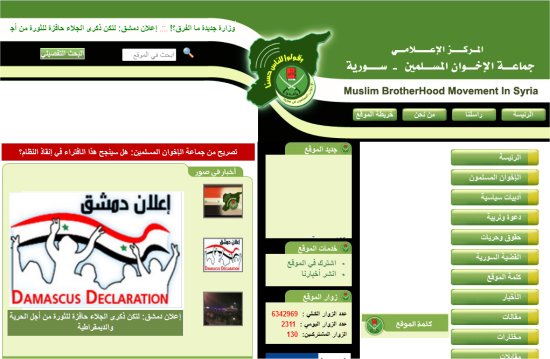
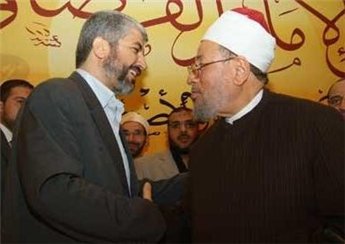


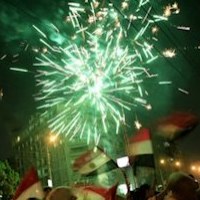
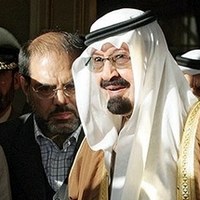
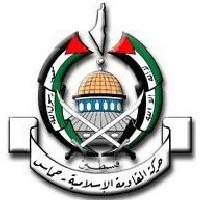




Hamas’ Difficult Position on the Syrian Revolt | #Syria #Hamas #MuslimBrotherhood http://j.mp/fuMghY
RT @CrethiPlethi: Hamas’ Difficult Position on the Syrian Revolt | #Syria #Hamas #MuslimBrotherhood http://j.mp/fuMghY
RT @CrethiPlethi: Hamas’ Difficult Position on the Syrian Revolt | #Syria #Hamas #MuslimBrotherhood http://j.mp/fuMghY
RT @CrethiPlethi: Hamas’ Difficult Position on the Syrian Revolt | #Syria #Hamas #MuslimBrotherhood http://j.mp/fuMghY
Gb SIMI: Hamas' Difficult Position on the Syrian Revolt | Middle East news …: A prominent figure among the fo… http://bit.ly/e2O2CS
“@RantsbyRemnant THEY ARE #Animuslims @CrethiPlethi: Hamas’ Difficult Position on the Syrian Revolt http://t.co/nfUgnDz”
“@RantsbyRemnant THEY ARE #Animuslims @CrethiPlethi: Hamas’ Difficult Position on the Syrian Revolt http://t.co/nfUgnDz”
RT @CrethiPlethi: Hamas’ Difficult Position on the Syrian Revolt | #Syria #Hamas #MuslimBrotherhood http://j.mp/fuMghY
RT @CrethiPlethi: Hamas’ Difficult Position on the Syrian Revolt | #Syria #Hamas #MuslimBrotherhood http://j.mp/fuMghY
[…] For further information see the April 17, 2011 article by […]